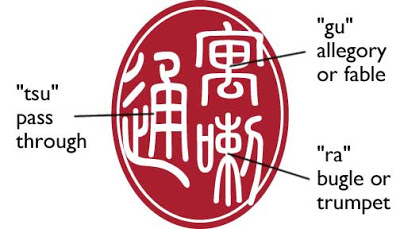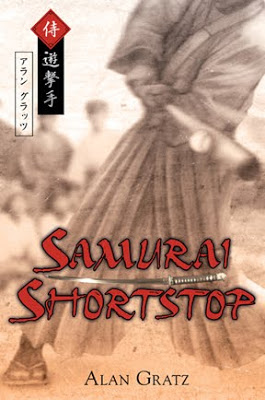My Hanko
Early on in my career, I stamped a red image with Japanese characters over my signature any time I signed Samurai Shortstop. The stamp is called a hanko. In Japan, all official documents are signed with such stamps, so I thought it would be fun to have one for my book signings.
I originally ordered a hand-made hanko from a craftsman whose family has been in the hanko-carving business since the Meiji era. Unfortunately, the craftsman’s wife became very ill and he was unable to fill my order. Instead I had to order a digital version of my signature, which I then had made into a stamp for my signings.
Japanese may be written using one of four ways: hiragana, katakana, kanji, or romaji. Romaji is the Romanization of Japanese, or, in other words, Japanese words written out in the English alphabet, like konnichiwa (hello) or sayonara (goodbye).
Hiragana and katakana are syllabaries, which means that each character represents a unique syllable. Hiragana is the most common form of writing in Japan, while katakana is used to write words that were added to the Japanese language along the way, like “television” or “America.”
Kanji are the most complicated of all Japanese characters, and the kind used when creating hanko. Kanji are characters that stand for words or concepts, not letters or syllables. Many kanji can be pronounced as a single syllable though, and these characters may be strung together to sound out a person’s last name.
For example, my last name, Gratz, would be pronounced “Gu-ra-tsu” by Japanese speakers. For each of those syllables, there are a variety of kanji that mean different things but are all pronounced the same way. At least six kanji, for instance, can be pronunced “gu,” and each means something different: tool, allegory or fable, fox, wild swan, jar, and rainbow.
 Many Japanese are fond of word puzzles, and there is a long tradition in creating hanko of choosing kanji that reveal a special meaning or significance to the signer. I was given a list of the various meanings each of the syllables in my last name might convey, and I chose the characters on the right. Can you guess the hidden significance of the kanji in my hanko?
Many Japanese are fond of word puzzles, and there is a long tradition in creating hanko of choosing kanji that reveal a special meaning or significance to the signer. I was given a list of the various meanings each of the syllables in my last name might convey, and I chose the characters on the right. Can you guess the hidden significance of the kanji in my hanko?
Since Samurai Shortstop made me a published author for the first time, I thought I could be “the trumpet through which the story passes.” Very profound, don’t you think? 😉

